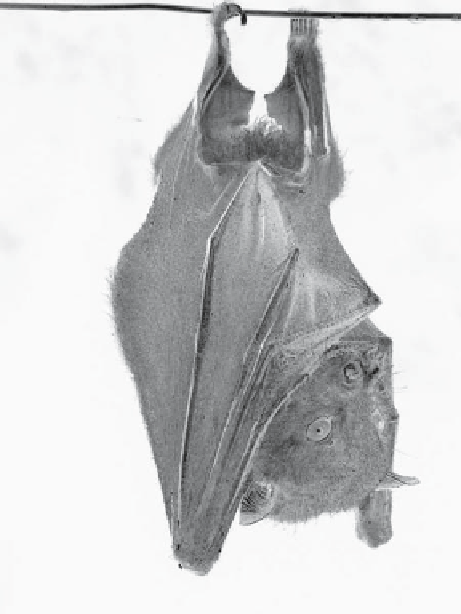Agriculture Reference
In-Depth Information
Photo 16.2
Short-nosed Fruit Bat
Cynopterus brachyotis
. The most common bat in tree-based
human-altered habitat types in this study (©Van Weerd)
16.2.3.2 Bats
Bat surveys were conducted using mist-nets of equal size (10 m long, 3.2 m wide, five
shelves, 30 mm mesh size, manufactured by ECOTONE Poland) and good quality.
They were placed at strategic locations within a distinct habitat type along creeks and
paths or were, in open habitat types, randomly distributed. A total of 34 lines of sev-
eral nets (2 to 5) were placed a little above the ground in Z-formations (see Table 16.2
for an overview of mist-net efforts). Nets were left open all night long for three con-
secutive nights and regularly checked. Bats were identified by the first author and
several experienced field assistants based on measurements (forearm, hind-foot, ear,
tail, total length, body mass) using Ingle and Heaney (1992). A unique identification
code was written on the wing of each individual with a large-tip waterproof marker
in order to identify re-catches of the same individual (five occasions, all
Cynopterus
brachyotis
; Photo 16.2). Re-catches were excluded from data analyses. All species
could be identified. No voucher specimens were taken. Although Megachiroptera
(fruit bats) and Microchiroptera were caught, several species in the latter category are
notoriously difficult to survey using mist-nets as they are able to detect nets using

Search WWH ::

Custom Search